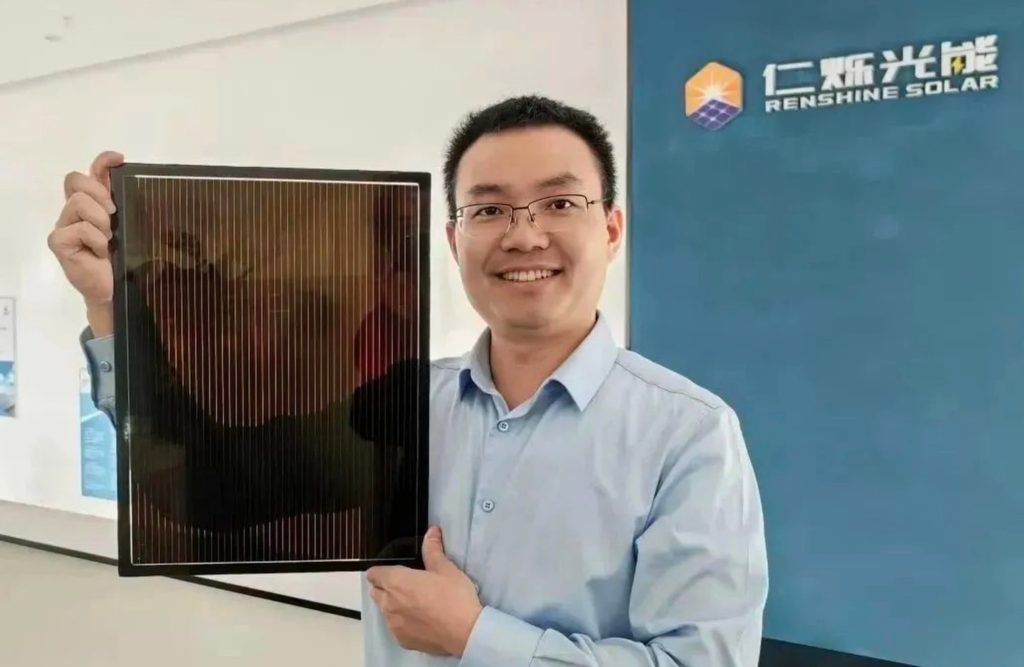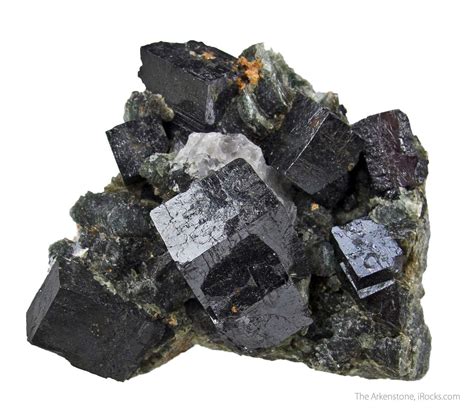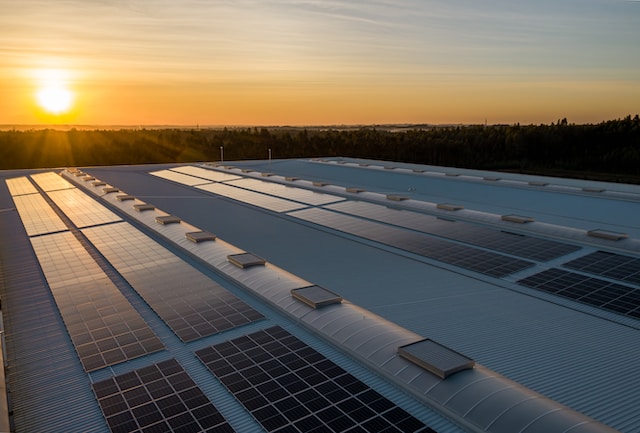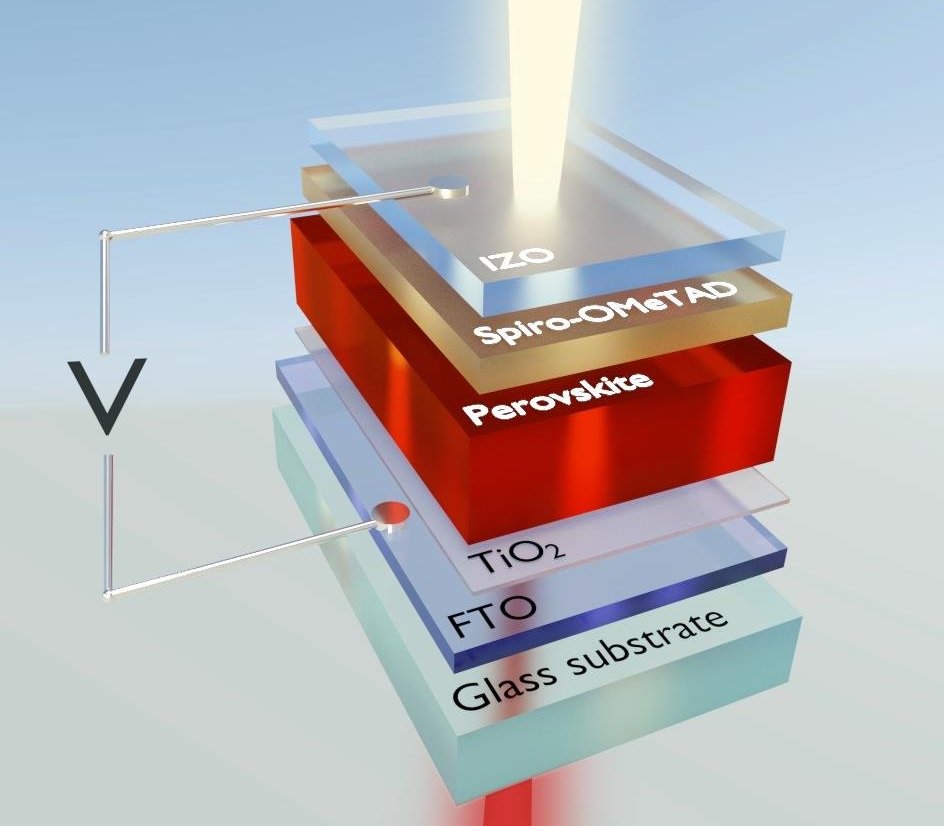Cover photo: Department of Energy
Sunlight is one of the best renewable energy sources you can use to power your home, saving you hundreds of dollars on your monthly bills as well as making electricity production much cleaner.
Although this alternative has evolved in the past couple of decades, it can still improve even more.
Today’s topic is Perovskite, a material that offers a 50% higher efficiency rate than silicon. Let’s dive into how this ‘miracle material’ is set to change the game.
Today’s Focus of Attention is reader-supported. We sometimes include products we think are useful for our readers. If you buy through links on this page, we may earn a small commission.

A Chinese startup called Renshine Solar is ready to start the commercialisation of this technology after researchers from Nanjing University, China, made the mass production of these panels possible.
Professor Tan Hairen, creator of Renshine Solar, said that the raw materials used to make perovskite are cheap and abundant while costing just one-twentieth of traditional PV modules.
Hairen emphasised that even with other items added in the assembly process, the overall cost is over half of that of common silicon cells.
Apart from the financial benefits, he also noted that the PSCs are easy to produce and can be made in a single factory.
To speed up the process, Renshine Solar signed a deal with the Chinese government to set up a production line in Jiangsu province in the coming months.
By September, the manufacturing facility is expected to reach a capacity of 150 megawatts.
What is Perovskite?
Perovskite is a mineral composed of calcium, titanium, and oxygen (CaTiO3). Named after the Russian mineralogist Lev Perovski, it was first discovered in the Ural Mountains in 1839 by the German mineralogist Gustav Rose.
In modern usage, the term ‘perovskite’ refers to any material with a crystal structure similar to that of the mineral itself.
Depending on the layout, perovskite exhibits a wide range of properties, such as colossal magnetoresistance, superconductivity, ferroelectricity, charge ordering, and spin-dependent transport.
These attributes make perovskite pretty versatile in various fields, such as electronics, energy, catalysis, sensors, lasers, and much more.

Now, let’s look at the characteristics of the current silicon-based solar panels and the promising perovskite ones.
Silicon Cells

Silicon has been the material of choice for photovoltaic cells since the 1950s because it is somewhat abundant and stable, and its semiconducting properties align well with the spectrum of the sun’s rays.
A downside of these panels is their expensive, multi-step manufacturing process, which uses vast quantities of energy.
Not to mention recycling. At the moment, a second life for used PV modules is not yet widely established and regulated.
Crystalline-silicon solar panels are, for the most part, composed of an aluminium frame, glass, copper wire, polymer layers, a plastic junction box, and a sheet of silicon cells.
Most of the components can be recovered and reused, with glass making up about 75% of the weight of the panel. However, the polymer layers sealing the panel are difficult to separate from the glass and the other materials.
An additional barrier to the recycling process is the presence of toxic elements, including lead and cadmium.
Average Lifespan
Panels last between 25–30 years, so the first generation is still in use but will eventually need to be disposed of.
By 2030, about 8 million metric tonnes of decommissioned solar panels are on track to accumulate planet-wide, and by 2050, that figure could reach 80 million. So an efficient recycling programme is urgent.
Without proper management, the accumulation of retired solar panels could create a huge graveyard with environmental and health risks.
To keep PV modules out of landfills, it’s imperative to reuse them, for instance, in electric bikes, vehicle charging stations, or remote locations.
Perovskite Cells

Given the challenges of silicon cells, scientists focused on creating semiconductors with similar properties. And experiments started.
In 2009, the Japanese engineer Tsutomu Miyasaka created the first perovskite-based cells. Back then, those cells were of little interest as they presented a low conversion efficiency and very low stability compared with the silicon cells.
Three years later, in 2012, researchers developed a stable, thin-film perovskite solar cell that rivalled the performance of silicon solar cells. And it came to pass: perovskite cells were born.
Scientists discovered that well-combined perovskite materials can absorb light more efficiently than silicon, be manufactured with a fraction of the cost and energy, and also be customised to match the sun’s spectrum. Since then, companies in the field have exploded.
But nobody knows yet how long these panels will last, how their recycling process will be, or their overall environmental impact.
They might be more efficient at producing energy, but let’s see if they can live up to their promises in terms of durability and sustainability. Only time will tell.
Research Insights
During tests, perovskite solar cells (PSCs) maintained about 90% of their initial performance after around 600 hours of continuous operation. It was enough to make them suitable for commercial applications.
In light of its efficiency, this next generation of solar technology can fit into buildings to generate electricity or heat.
In the study published in the scientific journal Nature, researchers pointed out that because of their lower fabrication costs, low-temperature solution processability, roll-to-roll manufacturing, and wide-band gap tunability, PSCs have the potential to become the candidate of choice for high-efficiency tandem solar cells.
Moreover, considering the rapid progress in photovoltaic performance, the study authors affirmed that PSCs can integrate with other systems to realise innovative technologies.
The Race to Dominate the Market
Qcells, a South Korean company, announced the world’s first production line for perovskite solar cells after the firm invested $100 million to fund the project. The factory, located in Jincheon, plans to be at full capacity by late next year.
Justin Lee, Qcells CEO, said that this investment marks an important step in securing technological leadership. Adding that with a global R&D network spanning Korea, Germany, and the US, Qcells will ramp up its efforts to produce high-efficiency advanced tandem cells.
Other companies competing in this field are Oxford PV, Saule Technologies, Tandem PV, Solaronix SA, and Greatcell Energy. They are likewise channelling substantial funds and making significant advancements, hoping to start producing any time soon.
The advent of perovskite solar panels happened just in time, as we are on the brink of an energy revolution.
Their promising efficiency, cost-effectiveness, and versatility are laying the foundation for the next generation of photovoltaic modules and a global solar power boom. However, as with any emerging technology, we must watch with a critical eye.
How long do perovskite solar panels last? What are their limitations and disadvantages? Can they be recycled with minimal waste?
If the world is indeed going to switch to a sustainable future, then we need to know the answers to these questions.
In the relentless quest to find cleaner energy sources, there’s no doubt that perovskite solar panels represent a significant leap forward in fighting climate change and reducing our reliance on fossil fuels.
But let’s remember, this journey has just begun.


